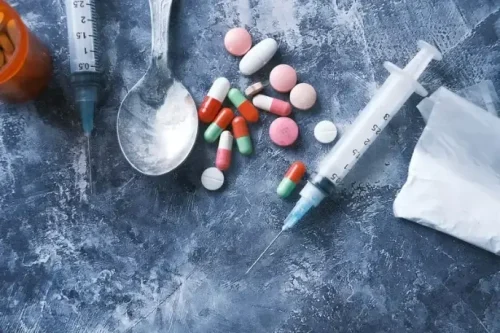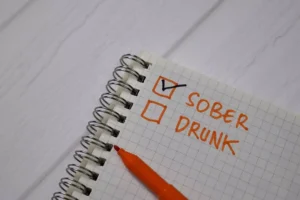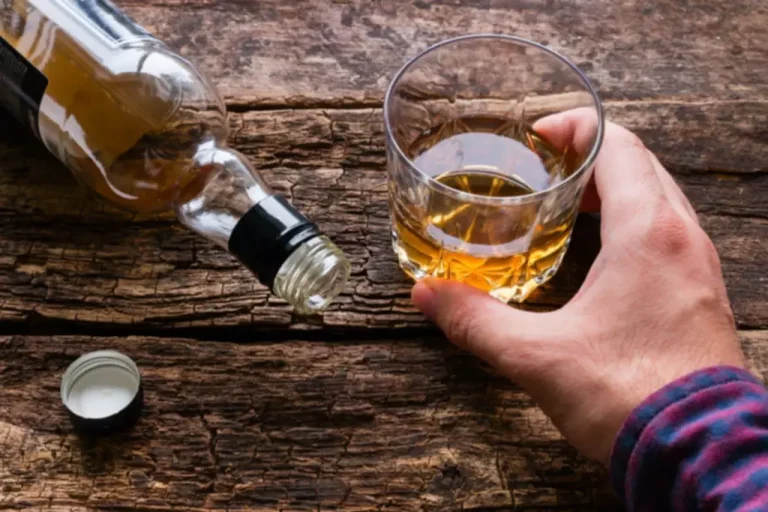
This is why the signs of overindulgence include slurred speech, bad or antisocial behavior, trouble walking, and difficulty performing manual tasks. Alcohol may seem like an easy solution to our blues, but we must remember that this mood-boosting effect is short-lived. The resulting drop in dopamine levels after we sober up can lead to feelings of anxiety and depression, creating a problematic cycle that only intensifies with time. Understanding the connection between dopamine and alcohol could inspire us to make more informed decisions about our drinking habits. Dopamine is released in our brains during happy, contented moments, whether we’re enjoying a favorite meal, laughing with our friends, or feeling satisfied after accomplishing a goal. This dynamic neurotransmitter is essential to our overall well-being and mental health, and it’s integral to learning, regulating mood, and making memories.
Rsu1 regulates ethanol consumption in Drosophila and humans
- Alcohol reduces glutamate levels in the nucleus accumbens and suppresses glutamate-mediated signal transmission in the central nucleus of the amygdala.
- Think of the term “dopamine rush.” People use it to describe the flood of pleasure that comes from making a new purchase or finding a $20 bill on the ground.
- As in the case of GABAA receptors, however, these excitatory receptors are relatively insensitive to intoxicating concentrations of alcohol under some experimental conditions (Wright et al. 1996), underscoring the need for more research in this area.
- Below are some ideas to help you have a healthy relationship with dopamine and help avoid dependence.
- Our staff includes master’s level counselors, licensed chemical dependency counselors, 24-hour nursing professionals, a staff psychiatrist, a staff chef, and direct care personnel.
The study concludes by stating that the efforts to characterize genetic contributions to AD may benefit by examining alcohol-related behaviors in addition to clinical AD. Here we quantified AB toward alcohol and non-drug, reward-conditioned cues and their neural underpinnings after acute dopamine precursor depletion across a broad https://ecosoberhouse.com/ spectrum of alcohol users. P/T depletion significantly reduced AB across three different tasks, particularly in individuals who reported heavier drinking. P/T depletion altered FC between prefrontal and subcortical brain regions involved in reward processing and motivation, and these alterations predicted changes in AB.
Aging with alcohol-related brain damage: Critical brain circuits associated with cognitive dysfunction
Dopamine makes you curious about ideas and fuels your search for information. Dopamine creates reward-seeking loops in the sense that people will repeat pleasurable behavior, from checking Instagram to taking drugs. In lab experiments, dopamine prompts a rat to press a lever for food again and again.
- This allostasis is characterized by aberrant glutamate, GABA, and opioid signaling, as well as, a dysfunction in nigrostriatal and mesolimbic dopamine transmission [16, 17].
- For example, mesolimbic dopamine projections from the ventral tegmental area (VTA) to the NAc play a critical role in both Pavlovian conditioning and the expression of conditioned responses [16, 17].
- «We have known for a long time that alcoholism runs in families, which implies a genetic risk,» said Dr. Raymond F. Anton, Distinguished Professor and director of the Center for Drug and Alcohol Programs at the Medical University of South Carolina.
- Dopamine is a neuromodulator that is used by neurons in several brain regions involved in motivation and reinforcement, most importantly the nucleus accumbens (NAc).
The Impact of Alcohol on The Brain – Neurobiology of Dependence and Alcohol Related Brain Damage
- As the VTA is a major nucleus of dopamine cell bodies, we explicitly assessed changes in connectivity with the VTA induced by depletion of dopamine precursors.
- Neurotransmitters are chemicals that allow signal transmission, and thus communication, among nerve cells (i.e., neurons).
- While AB is difficult to model in rodents, much is known about Pavlovian conditioned responses to reward-predictive cues.
- 1Nerve cells (i.e., neurons) communicate by releasing chemical messengers called neurotransmitters, which bind to receptor proteins on the surface of other neurons.
Researchers currently are trying to determine whether alcoholics with abnormal serotonin metabolite levels have specific variations in the gene that codes for the enzyme tryptophan hydroxylase, which produces serotonin from other molecules in the cells. Several variants of the tryptophan hydroxylase gene exist; one variant appears to be particularly common in alcoholics with histories of aggression and suicidal tendencies (Virkkunen et al. 1995). Researchers currently cannot directly measure serotonin concentrations in the human brain or within the synapses in laboratory animals. To gain information about serotonin levels in the brain, physicians and researchers have measured the concentrations of serotonin breakdown products generated after the neurotransmitter has been removed from the synapse (i.e., serotonin metabolites).

Dopamine also contributes to tolerance, which requires you to need more of a substance or activity to feel the same effects you initially did. If you develop a tolerance to a substance, you’ll need to use more of it to feel the effects you’re used to. When you’re exposed to those environmental cues, you’ll begin to feel the same drive to seek out that same pleasure. This drive can be incredibly powerful, creating an urge that’s hard to control.
These findings provide evidence that an «as-needed» prescription of nalmefene may be an effective treatment for alcohol dependence for some. Unlike medications that must be taken every day, the as-needed approach targets medication administration to periods where alcohol use is more likely and may help break the cycle of alcohol dependence and binge drinking. Detox will clear the alcohol from your system, helping your brain to re-achieve balance. Dopamine production will return to normal, and other parts of the recovery program will offer things that will help your brain boost dopamine levels without chemicals. Therapy sessions will teach you coping techniques to deal with the triggers that fuel drinking. You may also receive treatment for depression at the same time, as it is one of the primary withdrawal symptoms.


This may be due to the ubiquitous expression of nAChRs in the striatum which would limit our ability to detect changes in specific cell types. The dorsal striatum (DS) is implicated in behavioral and neural processes including action control and reinforcement. Alcohol alters these processes in rodents, and it is believed that the development of alcohol use disorder involves changes in DS dopamine signaling. In nonhuman primates, the DS can be divided into caudate and putamen subregions. As part of a collaborative effort examining the effects of long-term alcohol self-administration in rhesus macaques, we examined DS dopamine signaling using fast-scan cyclic voltammetry. We found that chronic alcohol self-administration resulted in several dopamine system adaptations.
- This CME/CE credit opportunity is jointly provided by the Postgraduate Institute for Medicine and NIAAA.
- While data suggest that P/T depletion affects dopamine more than norepinephrine [50, 58, 86, 87], changes to norepinephrine systems could contribute to the effects reported here.
- These substances usually trigger the release of dopamine, the body’s “feel-good” neurotransmitter.
- Large molecules, like opiates or amphetamines, only stimulate a specific neurotransmitter.
Recently mutations in the SERT gene, commonly known as 5’- hydroxtryptamine transporter linked polymorphic region (5’-HTTLPR), has been implicated in cases of alcoholism. One mutation is known as the “long” allele and the other mutation is known as the “short” allele. The difference between the two alleles is that the “short” version of the allele has a 44 bp deletion in the 5’ regulatory region of the gene. This 44 bp deletion occurs 1 kb upstream from the transcription initiation site of the gene.[53] This is depicted through the following diagram [Figure 4].

Some experiments found no difference in DA release in the NAc after intraperitoneal injection of ethanol between P and NP rats. For example, Yoshimoto and colleagues[11] and Gongwer and colleagues[23] found that although HAD and LAD rats differed in their basal level of extracellular DA, they did not differ in CNS DA release after intraperitoneal injection of ethanol. Similarly, Kiianmaa and colleagues[28] found no differential increase of extracellular alcohol and dopamine DA concentration in the NAc between AA and ANA rats after microdialysis of ethanol. These varying results may be due to the use of different animal models or different research protocols. The dopamine (DA) system in the CNS includes the nigrostriatal pathway, the mesolimbic pathway and the tuberoinfundibular pathway. Dopamine is mainly produced in the substantia nigra, projected along the nigrostriatal pathways and stored in the striatum.
Brain ethanol metabolism by astrocytic ALDH2 drives the behavioural effects of ethanol intoxication
In contrast to the dorsal striatum, dopamine release in the NAc is increased following chronic alcohol use in male cynomolgous macaques [22, 24]. The current study indicates that long-term alcohol consumption decreased dopamine release in the putamen of male rhesus macaques (regardless of abstinence status) and in the caudate of the multiple abstinence monkeys. Interestingly, we found an increase in dopamine release in the caudate and no change in the putamen of female macaque drinkers. The effects of these alcohol-induced changes in dopamine release must be considered with other factors contributing to dopamine signaling (e.g., dopamine uptake/transporter activity). Given our findings showing differences in dopamine release, it might be assumed that these effects are attributable to changes in presynaptic dopamine terminals. It should be noted, however, that our study utilized electrical stimulation to induce dopamine release.